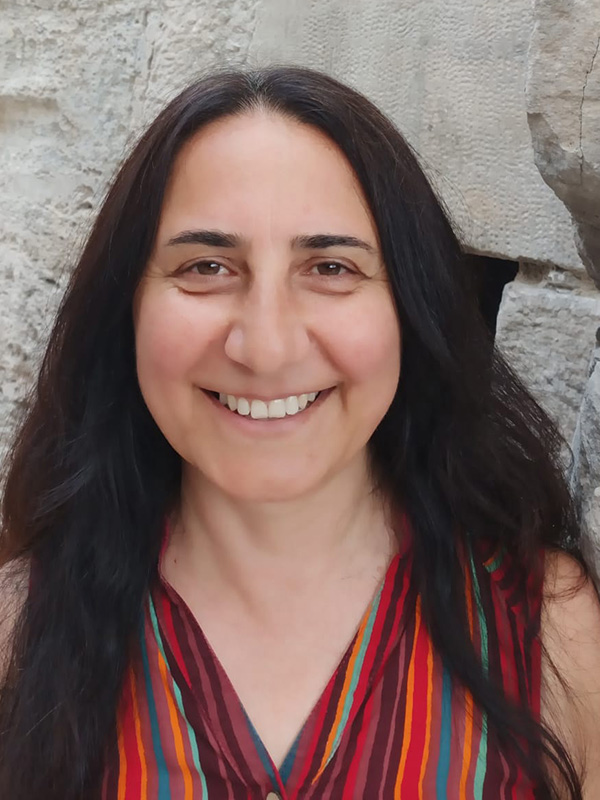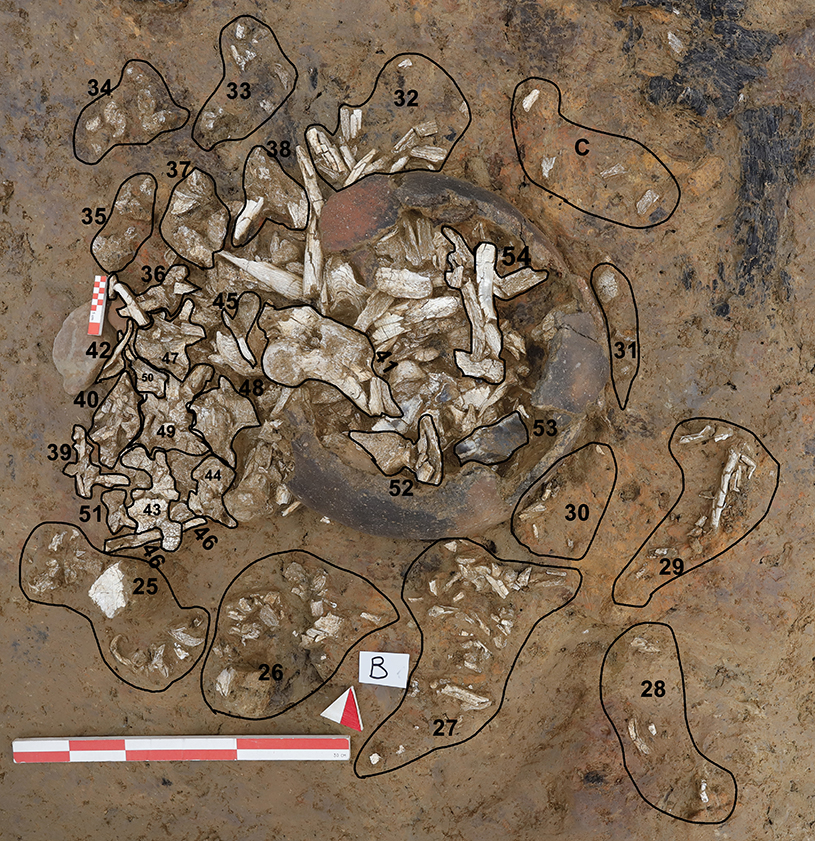
Dr. Yılmaz Düzce Üniversitesi Arkeoloji Bölümü Prehistorya Anabilim Dalında Doçent olarak görev yapmaktadır. Dr. Yılmaz, arkeo-antropologtur, arkeotanatoloji alanında uzmandır.
İstanbul Üniversitesi Prehistorya Anabilim Dalı ve Bordeaux 1 Üniversitesi Bilim ve Çevre Doktora Okulu Biyolojik Antropoloji Dalı’nda “Anadolu’da Neolitik Dönemde Ölü Gömme Uygulamaları: Çayönü Örneği” adlı çalışması ile doktora derecesini almıştır (birleşik doktora, 2010). 2015–2021’de Tunceli’de arkeolojik yüzey araştırmalarını yürütmüştür. 2022’de Tunceli Pertek Tozkoparan Höyük’te Tunceli Müzesi Başkanlığında yapılan kurtarma kazılarında bilimsel danışman olarak yer almıştır.
Arkeotanatoloji yöntemini arazide ve laboratuvarda uygulayarak yaygınlaştırmaya odaklanmıştır. İstanbul’da Yenikapı, Pendik, Sirkeci, Boukoleon, Beşiktaş kazılarında, Batman Çemialo kazısında, Nahçivan’da Ovcular ve Kültepe kazılarında gömütler üzerinde arkeotanatolojik çalışmalar yürütmektedir. Arazi çalışmalarının devamındaki analizler için, Düzce Üniversitesi’nde Biyolojik Antropoloji laboratuvarını kurmuş ve burada arkeotanatoloji alanında dersler vermektedir.
Beşiktaş’taki kurgan mezarlığının arkeotanatolojik yöntemle kazılmasında aktif olarak yer almıştır. Bu proje kapsamında kremasyonların ağırlıkta olduğu insan kemiklerinin analizlerini tamamlayarak Boğaziçi’ndeki bu alanın mezarlık olarak ve olasılıkla başka işlevler için kullanım biçimini anlamayı ve bölgesel bağlantılarını çözümlemeyi hedeflemektedir.
Traces of Nomads on the Bosphorus: Understanding the Early Bronze Age Kurgan Cemetery of Beşiktaş through Archaeothanatology
The excavations initiated in 2004 in the Yenikapı area, where the metro and the Marmaray transfer stations are located, have paved the way for new discoveries about the archaeological and natural history of Istanbul. At the same time, urban archaeology has brought about unusual situations for the profession, such as freelance archaeologists, and strikes at archaeological excavation sites. I made my first visit to the Yenikapı excavation site in 2008 when I volunteered to remove the Neolithic skeletons from the site. In Yenikapı, we discovered the earliest cremation practices of the Neolithic period in Anatolia. The organic fill that covered the Neolithic layer caused the preservation of the use of wood in funerary architecture. We unearthed the footprints of those who once walked on the stream bed immediately after a rain. We documented more than 2000 footprints dating back 8000 years.[1] These were the most extraordinary moments of my professional life. I began to encounter the archaeological ‘secrets’ of Istanbul. Istanbul’s surprises are now coming from the Beşiktaş excavation.
Archeothanatology
My PhD was on the application of archeothanatology to the Çayönü skull building. First developed by Henri Duday, this method combines and transcends the methods of archaeology and anthropology. In particular, the method draws attention to the fact that a burial is a structure created for the deceased where the tomb is opened, how the deceased is buried, whether or not an object is placed in the tomb with the deceased, whether or not it is filled with earth, etc. All these processes provide data such as the identity of the deceased and the society’s attitude towards death. Therefore, the application of the method starts in the field and suggests that the whole process of excavation, documentation, removal, biological analysis of human skeletons/bones, and their archaeological contextualization should be considered in relation to each other. Archeothanatology offers a general methodology using basic analytical tools such as taphonomy, the skeletonized environment of the corpse, and the chronology of joint termination.
However, additional protocols may need to be developed in the field depending on whether the skeletal/human bone remains are from single, multiple, successive, or simultaneous mass burials. Archaeological context, the state of preservation, and whether they are inhumed or cremated is also instrumental in developing these protocols. The state of bone preservation is very important for determining the age of death, sex determination in adults, and detection of diseases and trauma marks on bones. Therefore, experts applying archaeothanatology in the field must be familiar with human osteology, microexcavation techniques, and detailed documentation methods.
The rescue excavations in Istanbul enabled me to apply the post-excavation analysis method that I used in my thesis in the field. Since 2008, I have been unearthing and analyzing various human skeletons/bones from the Neolithic period to the Late Byzantine period in Istanbul excavations by using the archaeoanatological method. The kurgan cemetery in Beşiktaş is one of them.
During my stay at ANAMED, I carried out my work in three different ways. Firstly, I analyzed the cremation bones in the archaeology laboratory at the Beşiktaş construction site to answer the question “who was buried in the cemetery and how.” Secondly, I conducted bibliographic research using the library provided by ANAMED and the electronic resources of Koç University. Accessing many new publications on cremation allowed me to improve the methodology I use for analysis. I also conducted an extensive literature review on Early Bronze Age kurgans and migrations in order to determine the cultural connections of the Beşiktaş kurgan cemetery. We have prepared a publication with the experts of the Istanbul Archaeological Museum concerning the stratigraphy and the finds of the Beşiktaş Kurgan Cemetery. We are also planning to prepare a publication on the methods of how to excavate a cremation burial, as well as how to analyze one. I also had the opportunity to work with a computer programmer who will help me adapt my analysis system that I used during my PhD process to the cremations.
The Besiktas Kurgan Cemetery
The Istanbul Metropolitan Municipality started work in Beşiktaş as part of the construction of the Kabataş-Mecidiyeköy-Mahmutbey Metro Project. Archaeological excavations have been carried out in two different areas, the shaft and the station, under the direction of Istanbul Archaeological Museums since 2016. The excavations revealed archaeological remains dating back to the Ottoman and Byzantine periods, as well as the Early Bronze Age. The site is located in the Beşiktaş district on the European side of Istanbul, approximately 50 m from the Bosphorus shore. The kurgan cemetery is in the station area in a a plain formed by the alluvium brought by the Ihlamur, Beşiktaş, and Hasan Paşa streams.
There are 50 kurgan burials of various sizes, circular in plan, built with dry masonry, and containing human bone remains. The graves are dug inside the kurgans and in the spaces between the kurgans. Human bone remains have been recovered from 149 different units. The main burial practice of the cemetery was cremation. There are only 10 inhumations. Some of the cremated remains were buried directly in pits dug into the ground, while the others were placed in ceramic vessels known as urns. There are also burials dug in areas surrounded by stones. Areas thought to have been used for cremation were also excavated.[2] Cremation is the process of exposing a corpse to high temperature (700/800–1000ºC) for an average of one hour to remove the soft tissues as part of burial practices. The destruction of soft tissues by heat is accompanied by differentiations in discoloration, fragmentation, and deformation of bones. When the bones change color under the influence of heat, they first turn a brown-black color and then, as the temperature and the duration of the heat increase, they turn a grey-blue and then a white color. In addition to intense fragmentation, the bones shrink and change shape, bending inwards and outwards.

Fig. 1. Beşiktaş kurgan (©Istanbul Archeological Museums Archive).
Analysis Protocol
The Besiktas kurgan cemetery is situated within the construction area of the metro station. In archaeological studies carried out as part of construction projects, the excavation, documentation, and lifting of the remains should be designed to minimize loss of data and time. Thus, the archaeotanatological methodology, the speed and quality of which had been tested in rescue excavations in France, was applied to the cremation cemetery at Beşiktaş.
The bones unearthed in the inhumation and cremations were excavated regardless of their size. They were photographed at a 90° angle to show their relationship with other bones and were drawn. Finally, their coordinates were measured using a total station. Each bone fragment was given a number, this number was written on the drawings and photographs, and each bone fragment was marked with its number and removed from the site (Fig. 2A and 2B). Although the field work has been completed, the bones are still being analyzed. The bones in the cremation graves at Beşiktaş are generally white in color and heavily fragmented and deformed due to the prolonged exposure to fire. The environment in which the bones were buried has a direct effect on their state of preservation. The bones unearthed in urns are larger in size and have more identifiable fragments, while the bones only covered with soil are heavily fragmented.
Therefore, in order to obtain data while preserving the integrity of the bones, a progressive system of analysis was applied. Firstly, dry cleaning was carried out using the micro-excavation technique, identifiable bones were pre-analyzed, the bone type, side, and marks on the bone were recorded, and photographs were taken of those parts deemed necessary. The bones were then washed. For weight analysis, in particular, the bones must be largely free of soil. Parts of the bones that would be disintegrated by contact with water were cleaned with alcohol for conservation. Fragments of the same bone were glued together, and field numbers were written on the bones. The minimum number of individuals, weight, and fragmentation data were then recorded in the database. The surfaces of all bones were scanned with an illuminated magnifying glass for diseases that leave traces on the bones and for taphonomic examinations and the findings recorded in the database.
Each bone fragment was analyzed separately. The anatomical region, the bone to which it belonged, and a right-left distinction were made for symmetrical bones in the skeletal system. The number of individuals buried in the grave was also determined at this stage. Once the bones that make up the skeleton of the same individual were identified, they were arranged according to their anatomical position and photographed. The final stage was to fill in the skeletal record sheet. Biological analyses were carried out where the state of preservation of the bones permitted (determination of age at death, determination of sex in adults, and determination of diseases that leave traces on bones and teeth). The final step was to relate the results of the bone analysis to the archaeological context. For this purpose, the bone fragments identified in the analysis were colored according to their anatomical regions on the in situ drawings of the bones (Fig. 2B. As a result of this coloring, articulations between the bones could be checked. These colors can also be used to determine whether the bones were buried where they were cremated or whether they were moved and buried in a secondary area. The chronology of burials can also be determined if the bones of more than one person are found in the same place. The state of preservation of the bones made it possible to hypothesize which bones were exposed to direct fire during cremation. Bone weights are used in a variety of analyses, such as determining the number of individuals buried in the area, determining the ratio of identifiable to unidentifiable bone fragments, and understanding the degree of fragmentation of the burial under investigation.

Fig. 2. A) Cremation excavation and numbering of bones.

B) Archaeological contextualization of the cremation drawing and bone analysis results.

C) The skeleton of the cremated individual reconstructed with identifiable bones (©Istanbul Archeological Museums Archive).
As I have summarized above, a general method of analysis has been established which can be used for cremations of varying quality, and we are continuing to work with the data processors to increase support for digital technology. It is my intention to publish, under the title Handbook of Archaeothanatological Analysis of Inhumation and Cremation, the methods developed as a result of this work.
For this wonderful working environment, endless thanks to the ANAMED team.
[1] Yasemin Yılmaz, “Marmara Bölgesi Neolitik Dönem Ölü Gömme Geleneklerinde İlkler: Yenikapı Kazı Bulguları,” Tüba-Ar 14 (2011): 283–302.
[2] Rahmi Asal, Mehmet Ali Polat, and Gökhan Ortak, “Semtimizin İlk Sakinleri,” Beşiktaş Dergisi 07, no. 233 (2021): 55–58.

